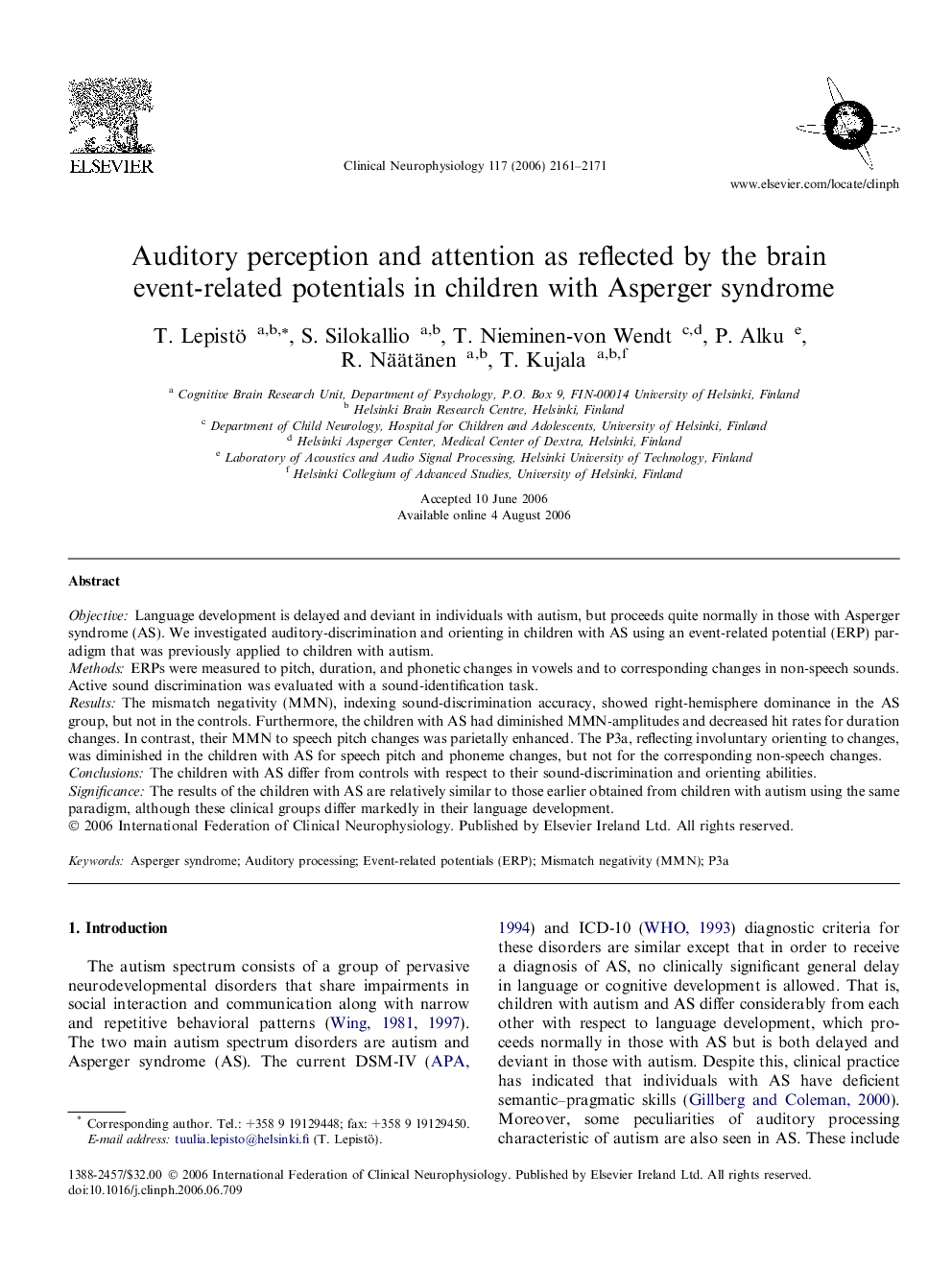| Article ID | Journal | Published Year | Pages | File Type |
|---|---|---|---|---|
| 3047665 | Clinical Neurophysiology | 2006 | 11 Pages |
ObjectiveLanguage development is delayed and deviant in individuals with autism, but proceeds quite normally in those with Asperger syndrome (AS). We investigated auditory-discrimination and orienting in children with AS using an event-related potential (ERP) paradigm that was previously applied to children with autism.MethodsERPs were measured to pitch, duration, and phonetic changes in vowels and to corresponding changes in non-speech sounds. Active sound discrimination was evaluated with a sound-identification task.ResultsThe mismatch negativity (MMN), indexing sound-discrimination accuracy, showed right-hemisphere dominance in the AS group, but not in the controls. Furthermore, the children with AS had diminished MMN-amplitudes and decreased hit rates for duration changes. In contrast, their MMN to speech pitch changes was parietally enhanced. The P3a, reflecting involuntary orienting to changes, was diminished in the children with AS for speech pitch and phoneme changes, but not for the corresponding non-speech changes.ConclusionsThe children with AS differ from controls with respect to their sound-discrimination and orienting abilities.SignificanceThe results of the children with AS are relatively similar to those earlier obtained from children with autism using the same paradigm, although these clinical groups differ markedly in their language development.
